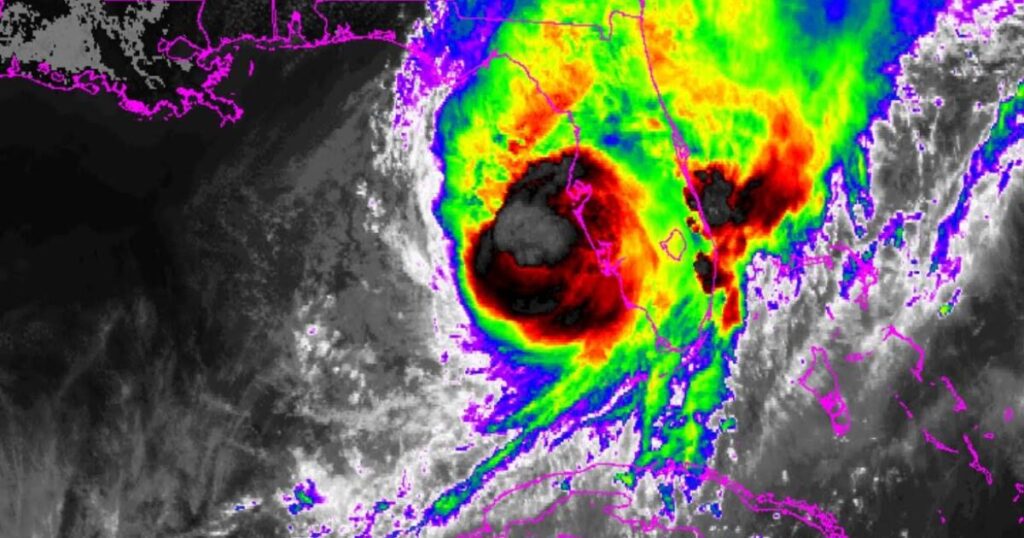Hurricane Milton has emerged as a significant meteorological event, making landfall on Florida’s west coast at approximately 7 PM ET on a Wednesday. As a Category 3 hurricane, Milton boasts maximum sustained winds of 125 mph, prompting widespread concern and preparations across the region. The storm’s rapidly escalating strength and torrential rain have raised alarm, leading to a storm surge warning for the entire vicinity. Given the destructive potential of such storms, officials have urged residents to heed evacuation orders and prepare for severe weather impacts.
In addition to the hurricane, tornadoes have been reported across Florida, indicating the storm’s complexity and capacity to generate further hazards. One of the most devastating tornadoes struck Fort Pierce on the eastern coast, causing significant damage as it crossed Interstate 95. Eyewitness accounts and video footage have illustrated the tornado’s violence, with substantial destruction evident in the aftermath. The combination of hurricane-force winds and tornado activity presents a dual threat, complicating the response efforts of emergency services and local authorities.
Reports of tornado damage have also emerged from Fort Myers, where residential areas experienced severe impacts from the storm. Homes have faced immense structural damage, with roofs blown off and extensive debris littering the streets. Images from the scene reveal downed trees and power lines, creating hazardous conditions for residents and first responders alike. In light of these developments, many inhabitants of affected areas are seeking alternative shelter to ensure their safety during the ongoing crisis.
As hurricane coverage intensifies, meteorologists and weather analysts are closely monitoring Hurricane Milton’s trajectory and strength. During this critical period, platforms such as StormHQ and local news outlets provide real-time updates and storm chase footage to provide insight into the storm’s progression. This immediate information is vital for residents making decisions about their safety, as they navigate the dual perils presented by Milton.
Community responses to Hurricane Milton’s onset emphasize the importance of preparedness and timely evacuation. Local authorities have mobilized resources to assist those in need, while shelters are being established for displaced individuals. The sharing of information via social media, news broadcasts, and public alerts has fostered a collective awareness, allowing residents to stay informed about evacuation routes and emergency services’ operating status amidst the chaos.
As Hurricane Milton continues to unfold, the focus remains on assessing damage, ensuring public safety, and restoring power and services to affected regions. Recovery efforts will likely take time, given the extent of destruction reported thus far. The storm serves as a reminder of the power of natural disasters and the ongoing emphasis on preparedness and community resilience in facing such ominous challenges. The coming days will be critical in determining both the immediate impacts of the hurricane and the long-term recovery process as Florida copes with the consequences of Hurricane Milton.

